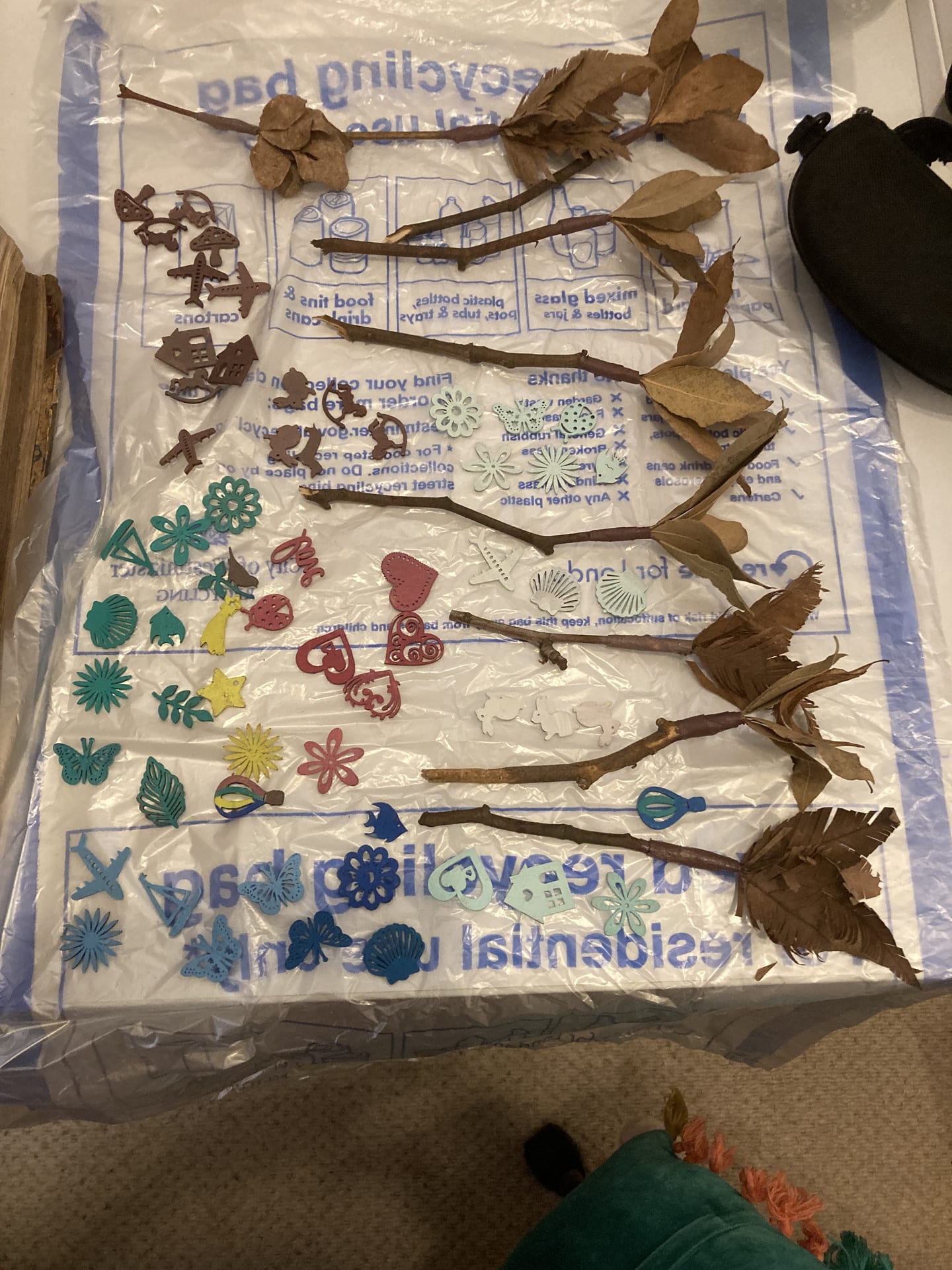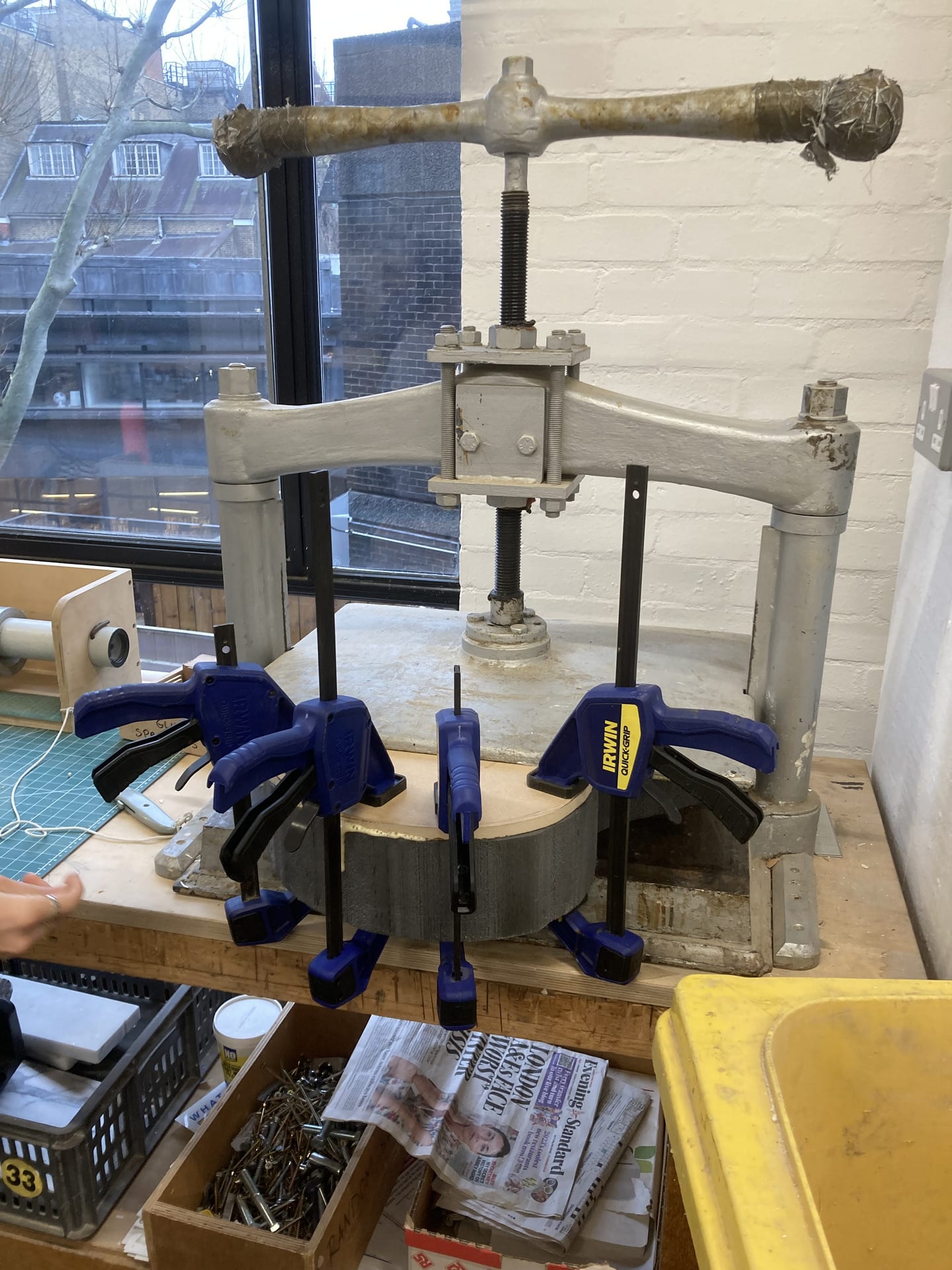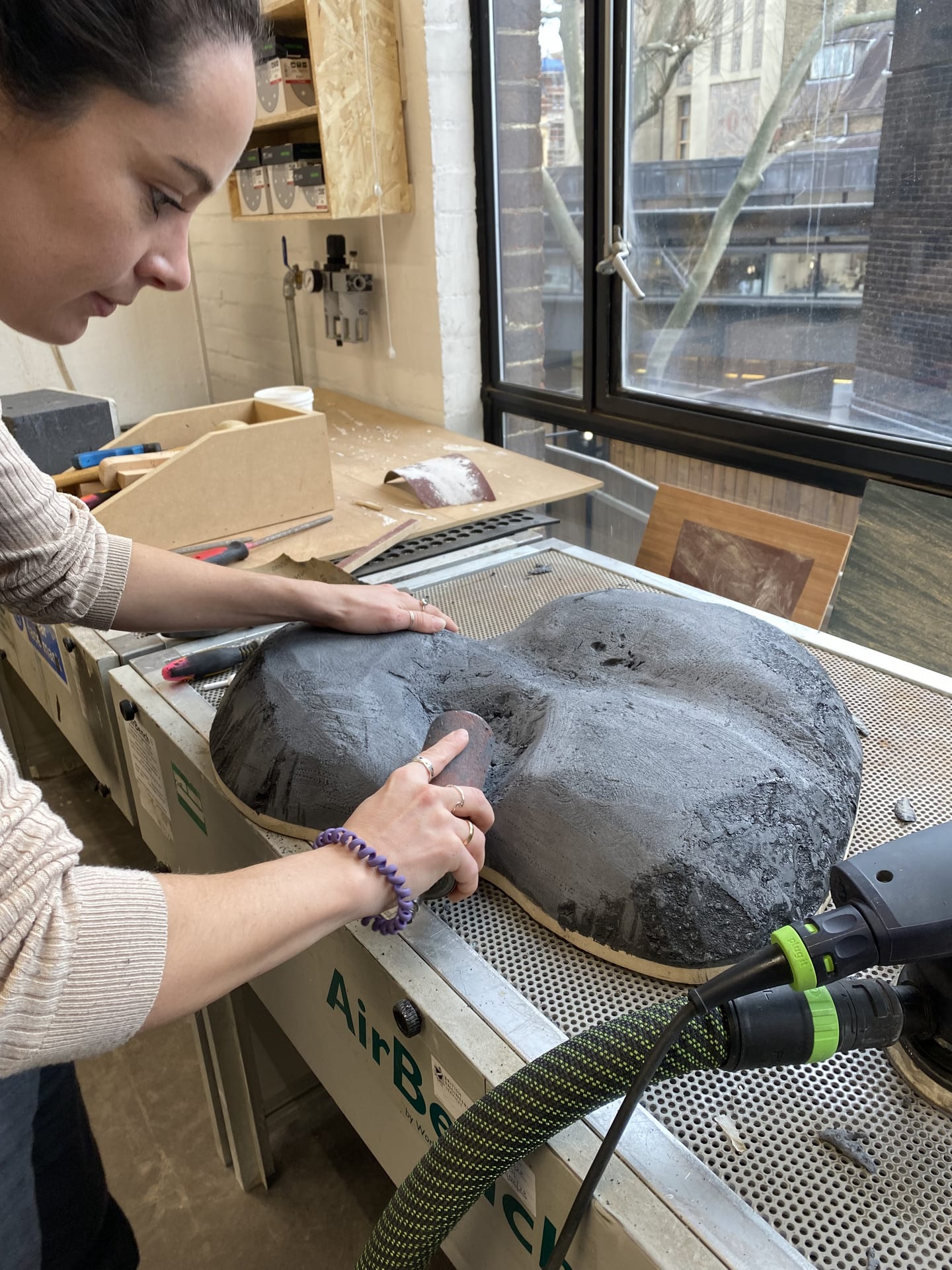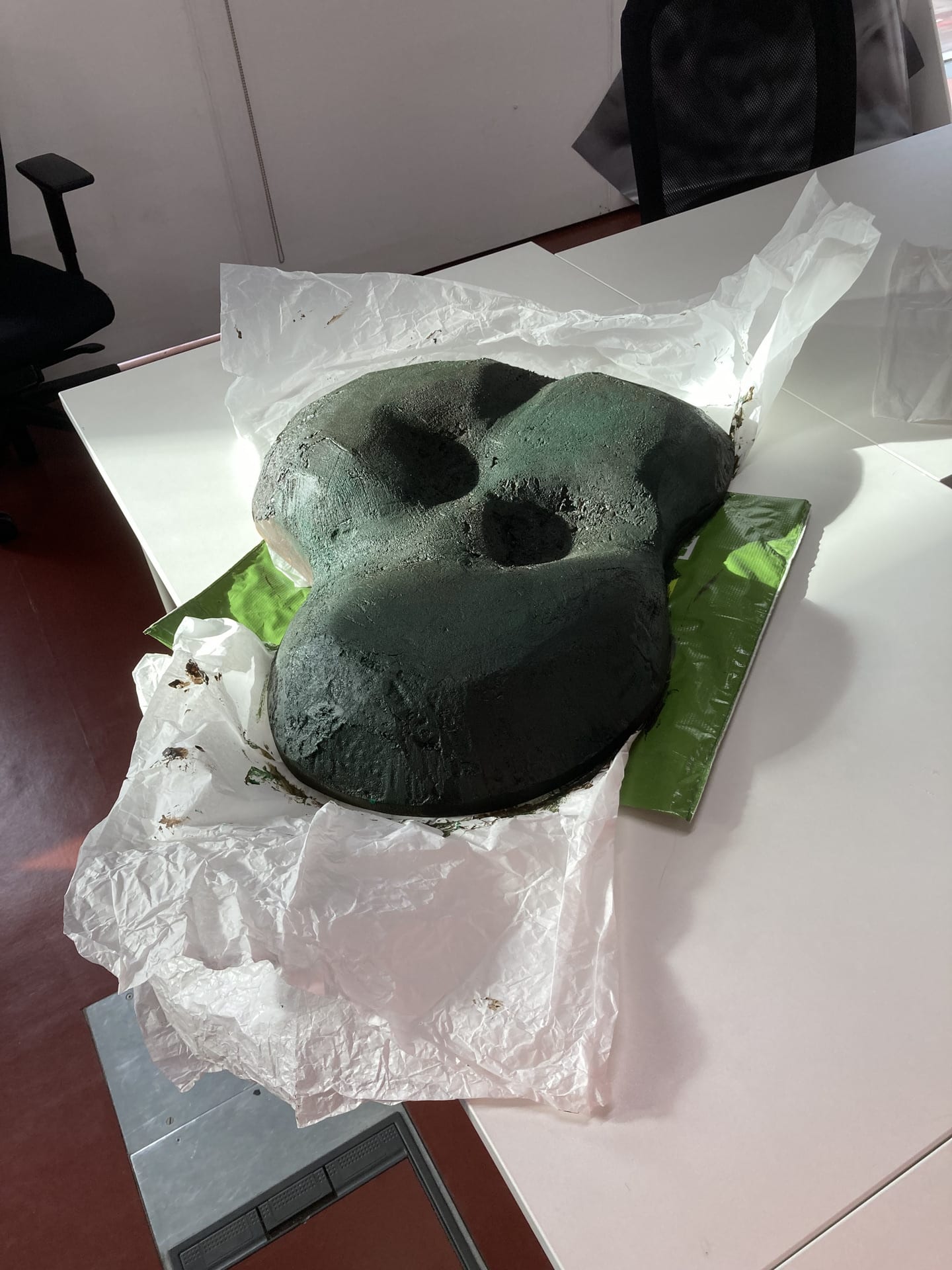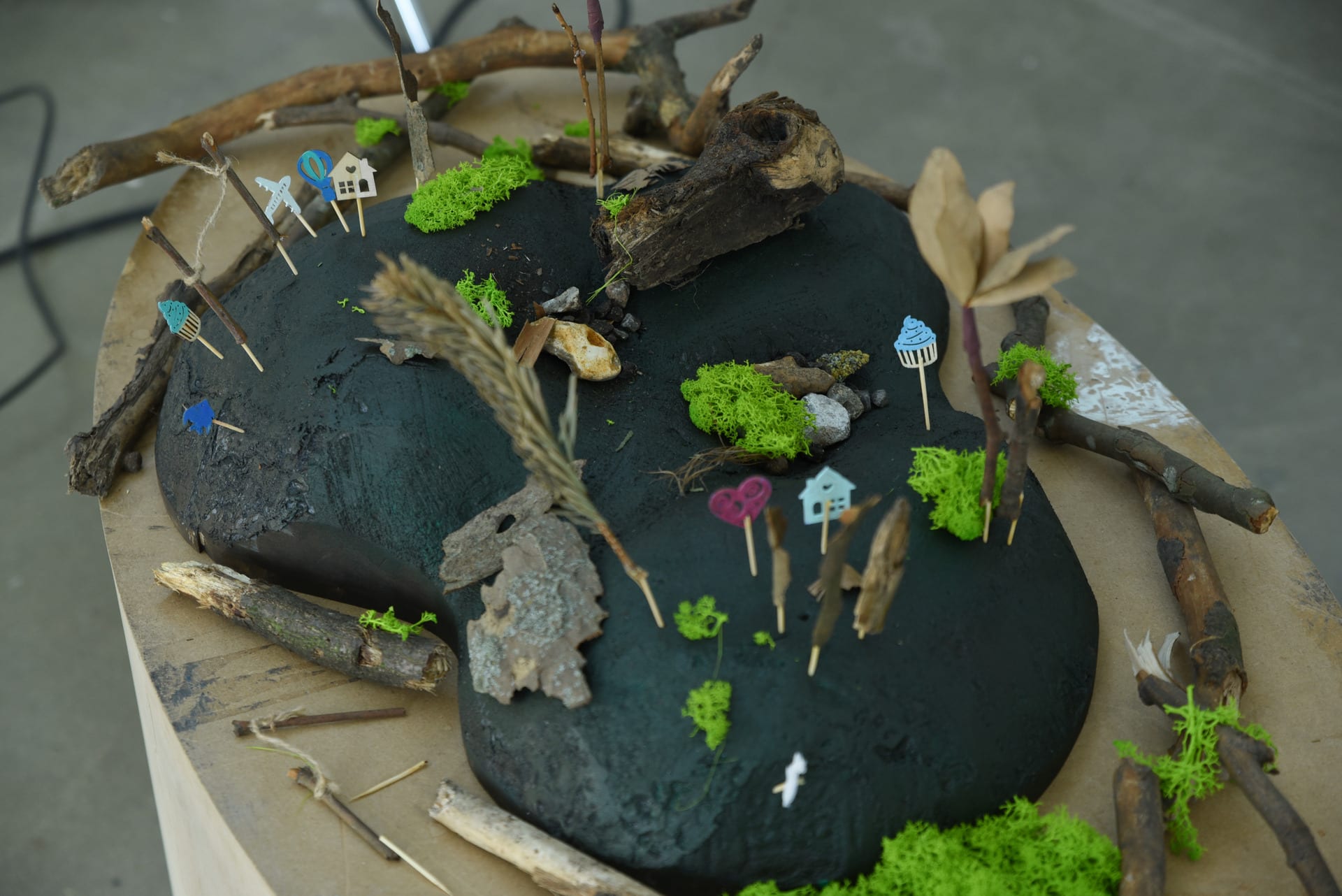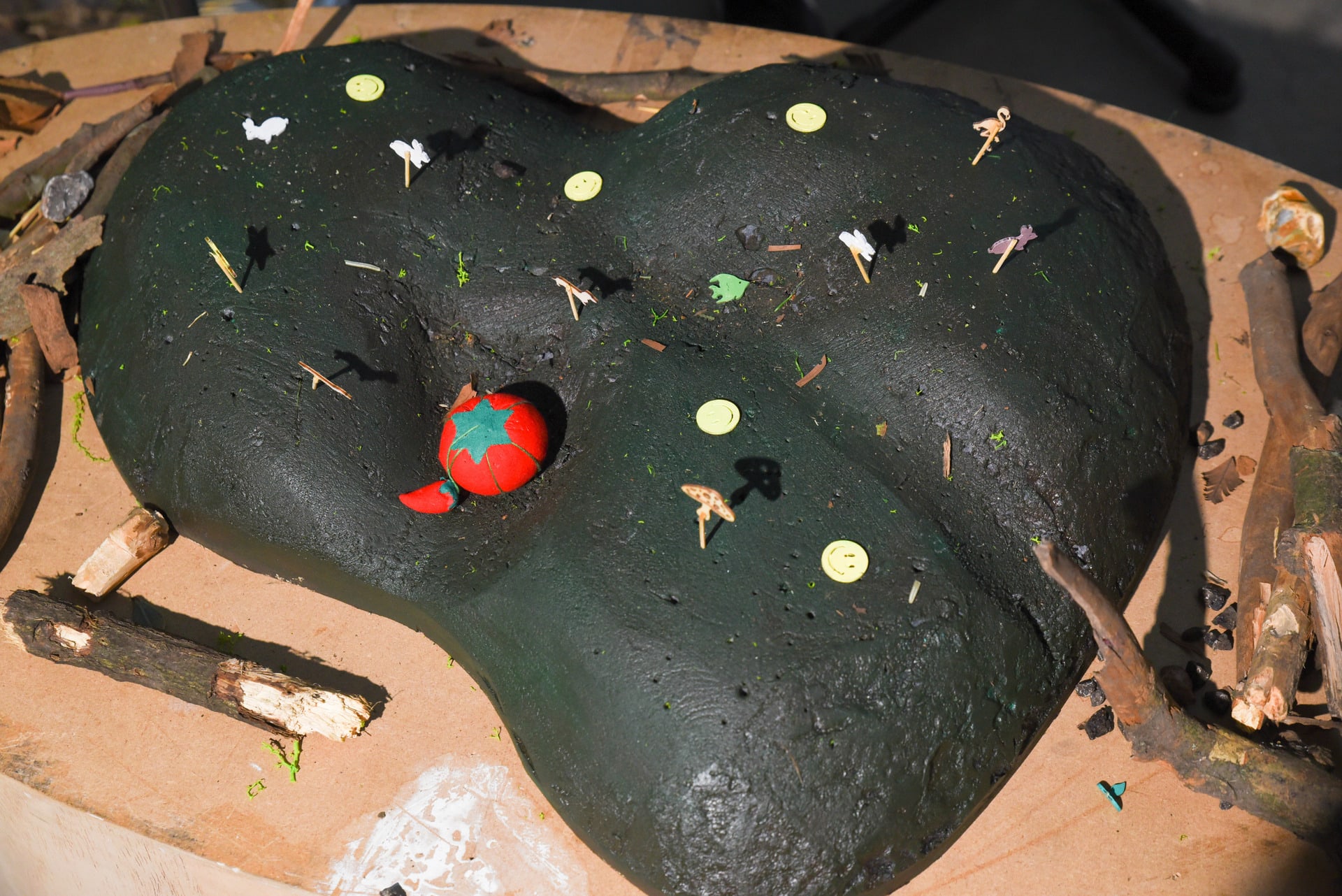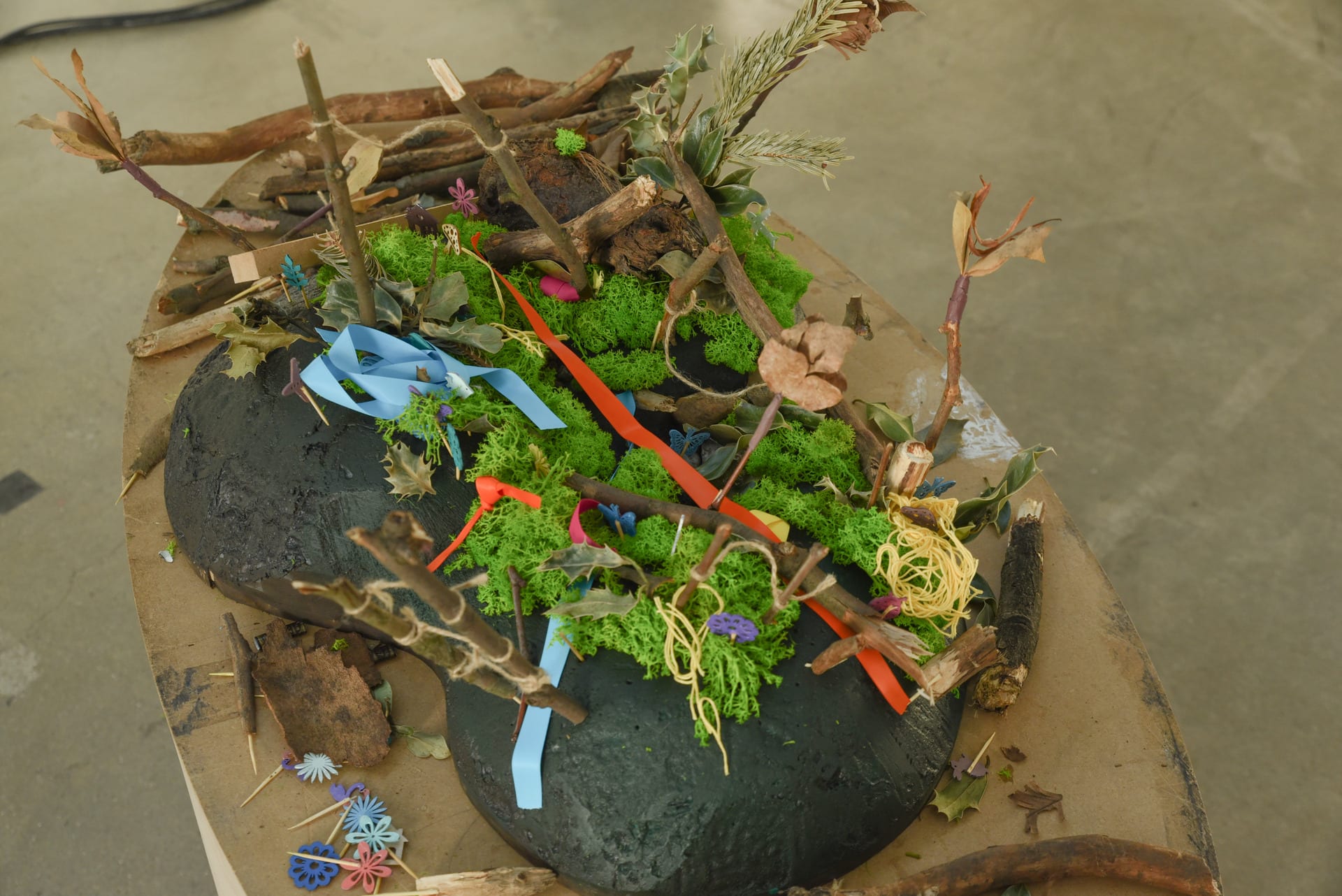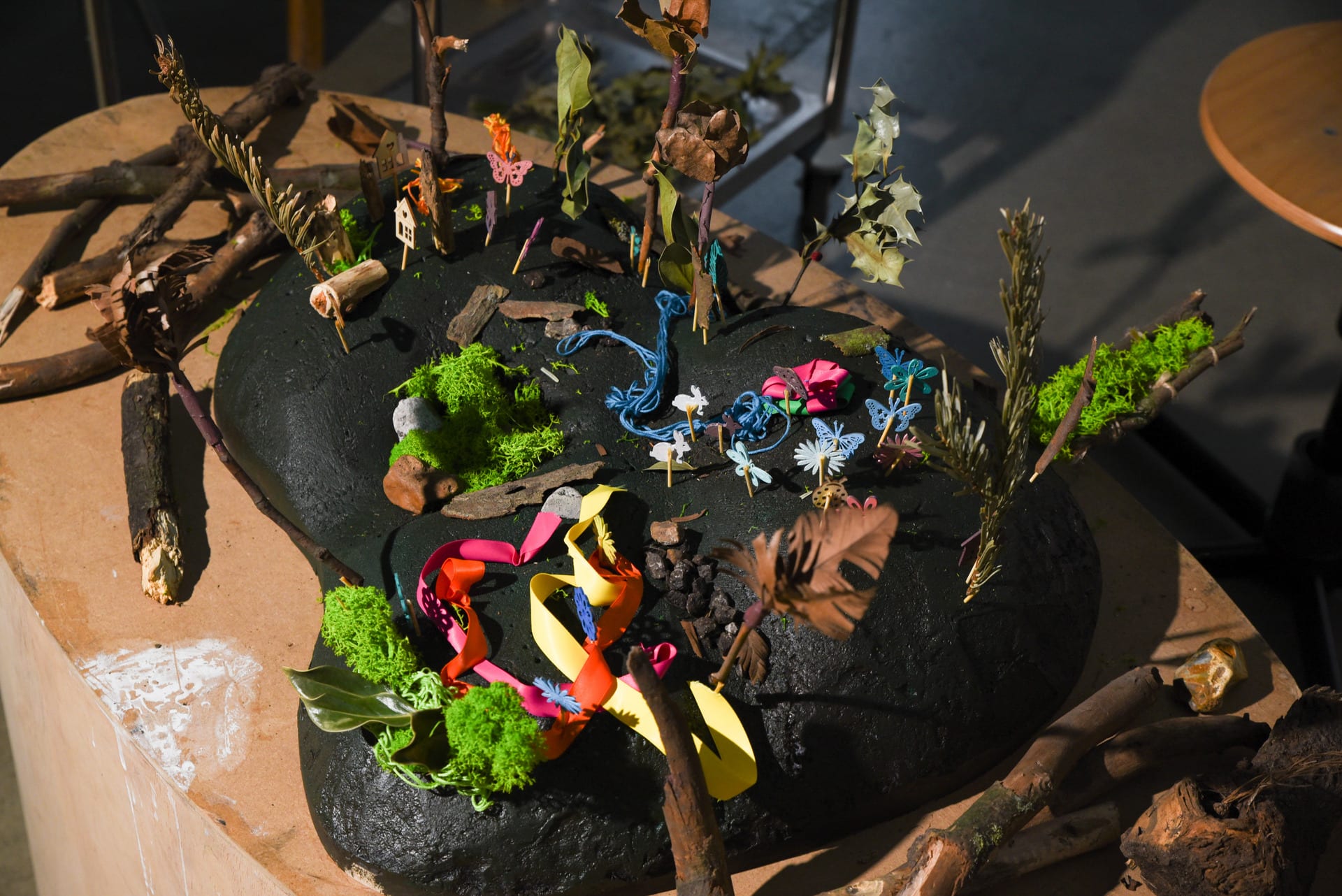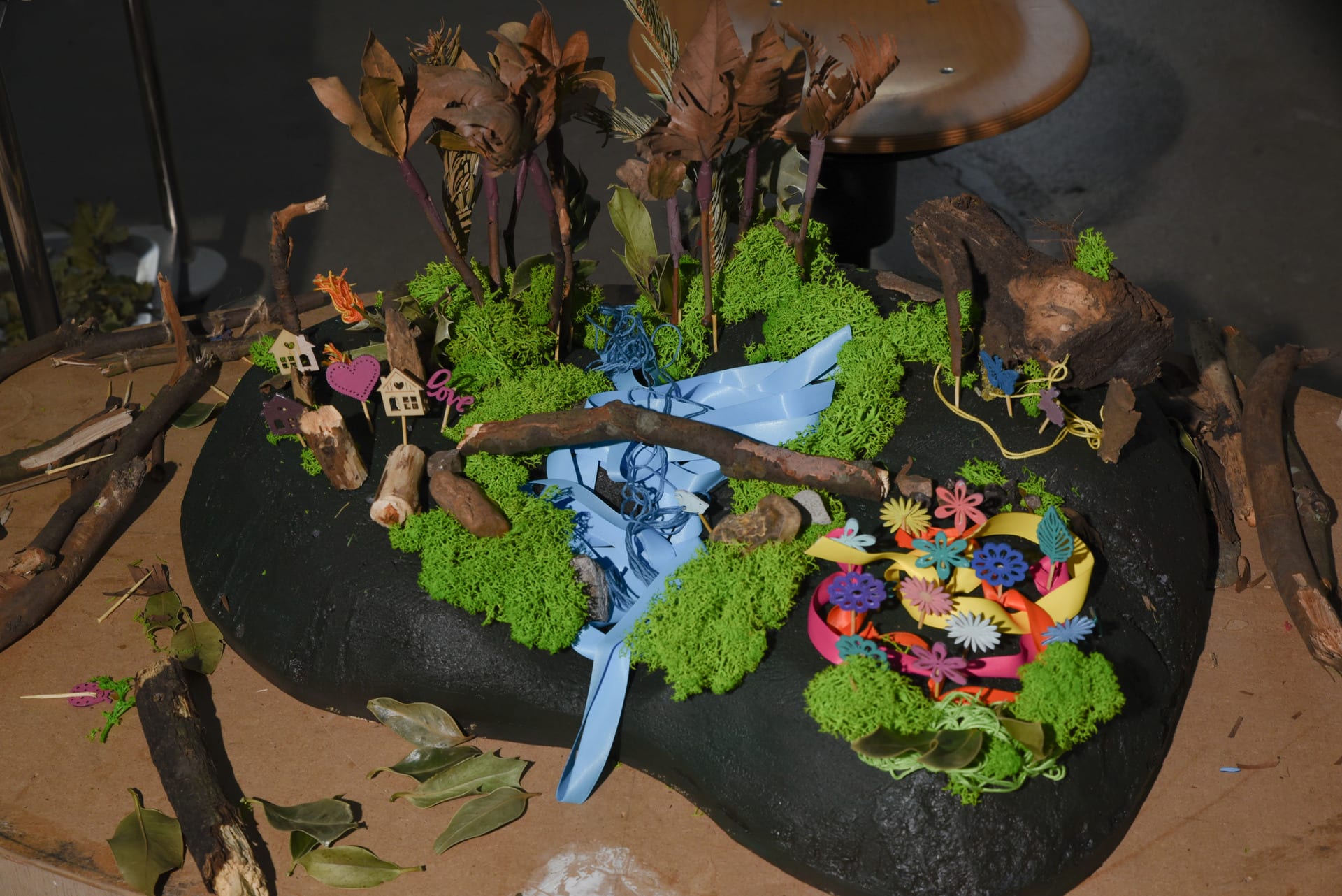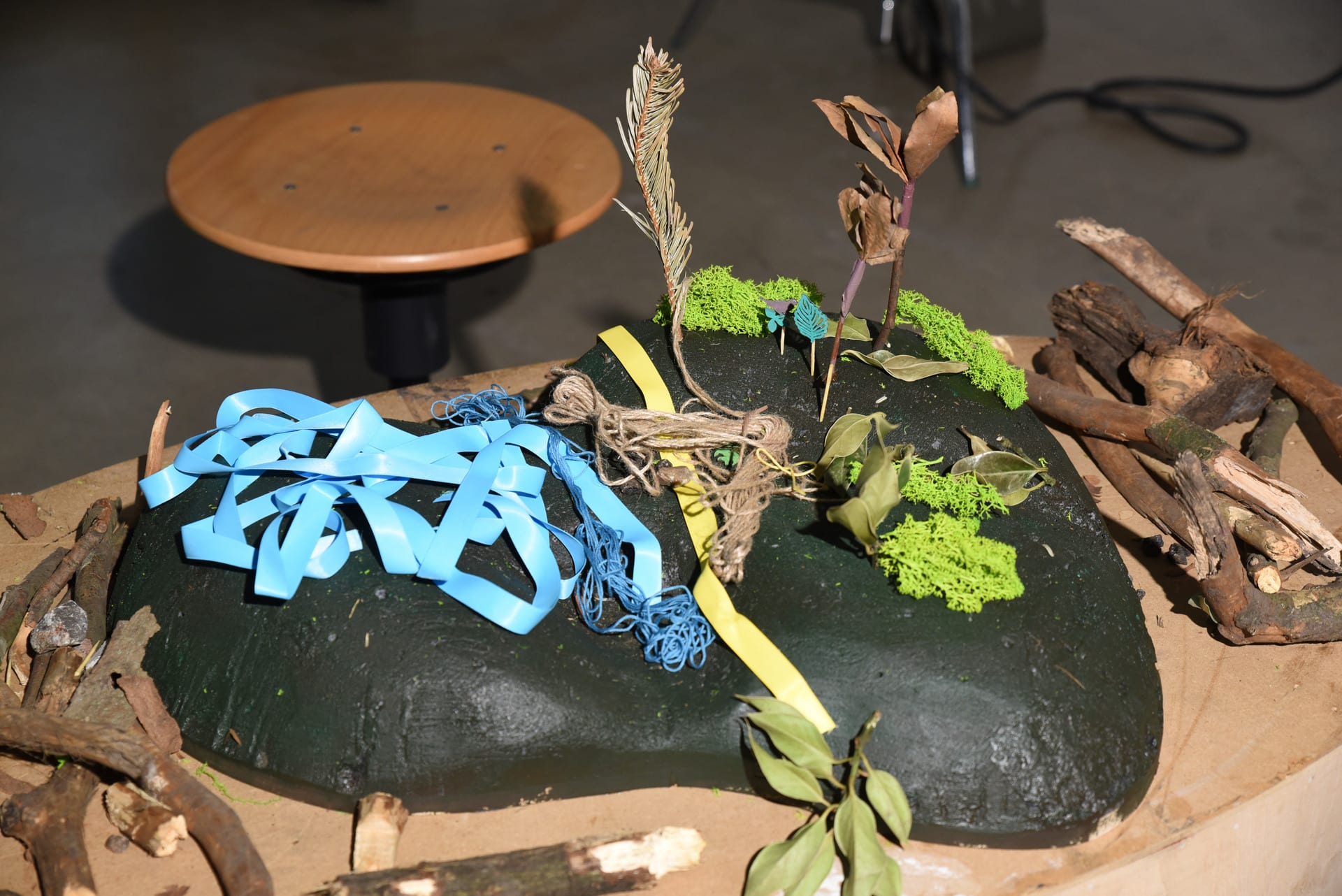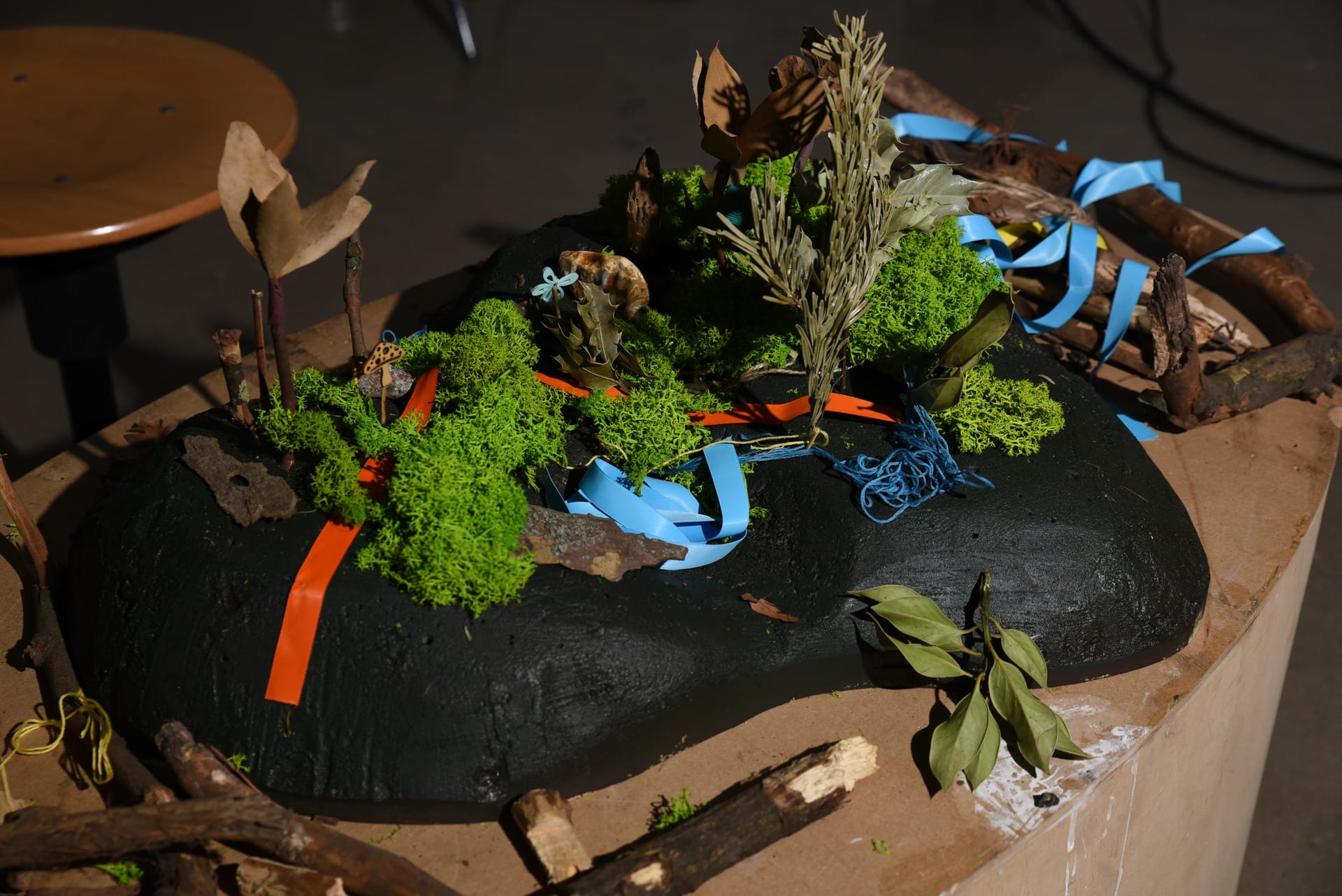We created a roughly 40cm^2 model, which allowed us and our participants to explore how public natural spaces (such as parks) could provide more equal access and meaningful interactions for users (especially marginalised groups, such as POC/BAME and LGBTQIA+ people) and thereby bring to these communities the social, mental, and physical benefits they are often denied.
This was a research-led project, informed by medical and sociological studies demonstrating the benefits of access to nature and the fact that queer and POC people disproportionately lack access to nature in the UK. We utilised sensory information and physical experiences of natural spaces to inform the model's design, such as through foraging for materials in and around London parks.
We presented the model to 12 members of the RCA community (including several queer and POC/BAME people), inviting them to co-create the model (by affixing found natural materials and instilling sounds and smells into the model). This provided participants with an opportunity to explore how public green spaces could be designed according to their preferences (imagining that their model might one day be reproduced on a 1:1 scale), as well as providing them with tactile experiences of nature immediately through interacting with our foraged materials. We photographically documented the model (not the participant, so as to maintain anonymity) after each interaction and noted down each participant’s interpretations of their process, thereby allowing us to analyse how our ecological model was communally shaped.
Implementations of our study can obtain valuable insights into people’s preferences for designing natural landscapes, particularly in terms of what would better suit those conventionally marginalised from urban green spaces. For example, our analyses of our small sample size suggest that non-POC/BAME and non-LGBTQIA+ people have a tendency towards minimalism, uniformity and perilous excitement which is not shared by POC/BAME and LGBTQIA+ individuals. Moreover, all our LGBTQIA+ and POC/BAME participants’ models were permeated with notions of accessible transport, community connection and diversity of colour and species.
Perhaps further iterations of this study will similarly find that the design preferences of non-marginalised individuals towards cleanliness and potential danger (somewhat akin to a well-functioning rollercoaster park) would exclude marginalised individuals, who seem to find peace in diversity and safety, rather than seeking excitement in uniform thrills. Perhaps, instead, future studies might find participants’ responses lead researchers to draw entirely different conclusions. We invite practitioners across the globe to take up this mantle, attempting this study themselves, sharing their findings and thus furthering our initiative to use co-creative design to challenge the marginalisation of certain identities from public natural spaces.




